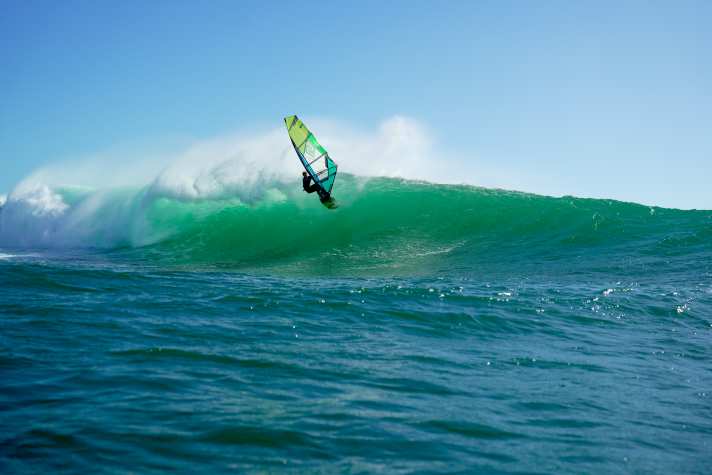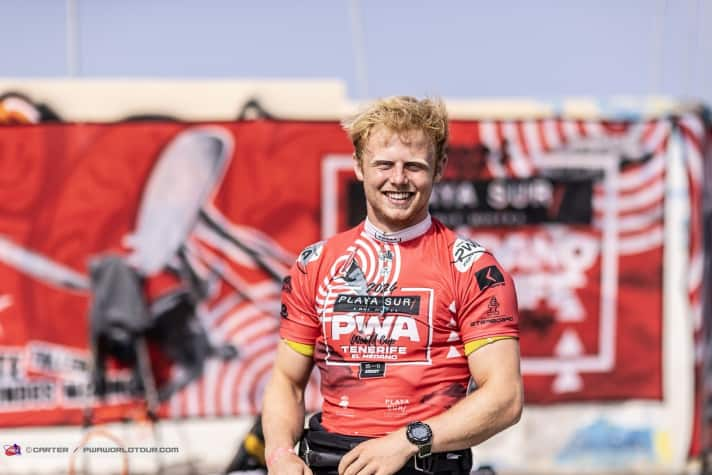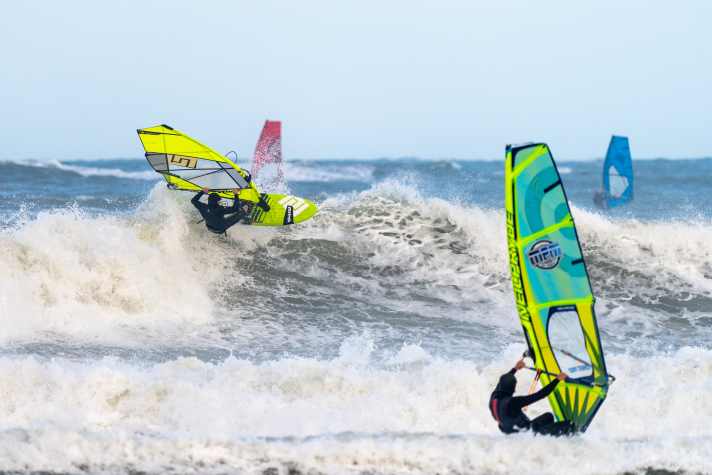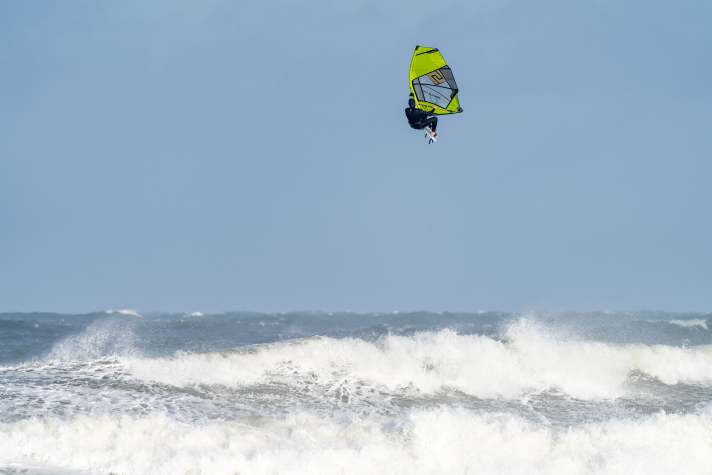





Anyone who has been on the water in the north of Denmark recently has Simon Thule probably noticed immediately. Towering front loops, radical wave rides - the young Dane stands out. On land, he tends to be one of the quieter representatives. Nevertheless, we coaxed a few words out of him for an interview.
Simon, November offered endless wave conditions in Denmark, so it wasn't easy to catch you on land for an interview...
Yes, we really had a lot of good days up here. Autumn is the best time of year.
The level on the water is pretty high at the spots around Klitmøller, but you still stand out. You seem to have improved a lot in a relatively short space of time.
I actually only started windsurfing in 2016, when I was 15. Until then, skiing was actually my passion, but as a Dane, it's obviously not ideal to have this hobby. So I needed a sport for the summer months. So I started sailing at home in Aarhus, but, as with football or handball, I somehow missed the kick. The most fun for me was always when the boat tipped over (laughs). At some point, I got into windsurfing. My father had learnt 30 years ago and we started again together in 2016.

But your learning curve is very impressive...
I think it's simply the countless hours on the water. In the beginning, I was on the water a lot with slalom equipment and also in the performance squad. But when it comes to racing, it's more the regattas that are the fun. I've always enjoyed free surfing more with wave equipment. I was out in Klitmøller for the first time a year after I started. Of course, back then I always had to find a lift to get to the waves from Aarhus. Luckily, my dad was fully motivated to go windsurfing again and we were able to go out together more often. In the following years, I also went to the Canary Islands for longer periods in the summer, so of course you get a lot of water time and routine.

We're talking about your teenage years here. How did you reconcile travelling with school back then?
In Denmark, there is a support programme for young athletes in the competitive squad that allows them to have more time off. If you are travelling for a longer period of time, you can also take advantage of online lessons to help you get through the material. That helped me a lot at the beginning. Another factor was the coronavirus pandemic. In Denmark, the schools were closed for months and they switched to online lessons. From that moment on, it didn't matter to me whether I was sitting in front of the computer in Aarhus, Klitmøller or Cape Town. I did my schoolwork in front of my laptop in the morning and was able to go out on the water in the afternoon.
Can wave windsurfers in Denmark also benefit from such a subsidy?
No, that's limited to the Olympic disciplines. That's also the reason why I've been out of it since I gave up the racing disciplines.

Does that mean you are currently focussing fully on wave surfing?
My life is currently centred around windsurfing. When it's windy, I go out on the water, when it's calm, I train in the gym. I'm also involved in the material development of my sponsor Patrik I'm also involved in a surf school in Aarhus and organise clinics and camps. So at the moment I live entirely from windsurfing. In 2025, I want to take part in all the World Cups that make sense for me and are financially feasible.
You need the necessary small change to finance the trips. How difficult is it to secure the necessary sponsors as a young windsurfer in Denmark?
As is probably the case everywhere - it's pretty difficult. It is important to find supporters outside of windsurfing. However, this is usually done through personal contacts. Although we have such great conditions on our coasts, windsurfing is more of a fringe sport. But Olympic windsurfing is currently providing a boost, at least that's how I feel. Many people from sailing are currently coming to iQFoiling and I think that this can ensure that the other windsurfing disciplines also become more popular in Denmark.
At this point, you will find external content that complements the article. You can display and hide it with a click.
You've already done a few World Cups. What was it like to be a young newcomer at the Skippers Meeting for the first time and to be surrounded by all the big boys like Marcilio Browne, Philip Köster and Victor Fernandez?
Of course I was totally nervous. That was also my biggest problem in the contest for a long time - the nervousness.
How much of the contest is down to skill and how much to brains?
I would say the head is more important. You can have a 97 per cent success rate in free surfing with a certain move and regularly mess it up in the heat. The most important thing in contest surfing is to manage to stay calm and patient, to wait for the right waves instead of frantically surfing every little hill for fear of ending up without a score.
Nervousness was my biggest problem for a long time
That's so easy to say. But how do you learn it?
At the beginning of my contest career, I often got really bad wave scores, even though I was already a good waverider back then. But you have to wait for the set waves to get points. By accepting that it won't work without a good wave, you take the pressure off yourself and become more patient. Apart from that, you need a tactic. I always try to do safe moves at the start of the heat: stalled forward, pushloop, backloop - these are jumps that I know I can normally do. That brings the heart rate down and creates a positive mindset for wave rides and everything else that comes next.

You said that you are involved in the material development of the sponsor Patrik. How did the contact with shaper Patrik Diethelm come about?
The contact came about in 2023. Since then, I've been involved in the development of new boards, sails and fins. I visited him in Australia last winter and he had quite a few prototypes ready for us to test. I was able to take some of them back to Denmark with me. What is important to me personally is material with power. If you want to jump high and carve powerful turns, you need equipment that starts planing early and gives you enough energy.
Recently, you have increasingly shifted the centre of your life towards Klitmøller, haven't you?
Exactly, I have a caravan in Klitti and I'm always there when it's windy. But because it's windy so often, I now spend most of my time there. But if it's really quiet for a long time, I still like being at home in Aarhus.
Australia, the Canary Islands, South Africa - or the caravan in Klitmøller? What is your absolute favourite spot?
Australia offers real dream waves, of course, but to be honest: When Hanstholm works, it's my favourite place to be. It's certainly not the best spot in the world, but then again there aren't that many places where you can ride and jump waves so well. The feeling of surfing at home is always something special.

